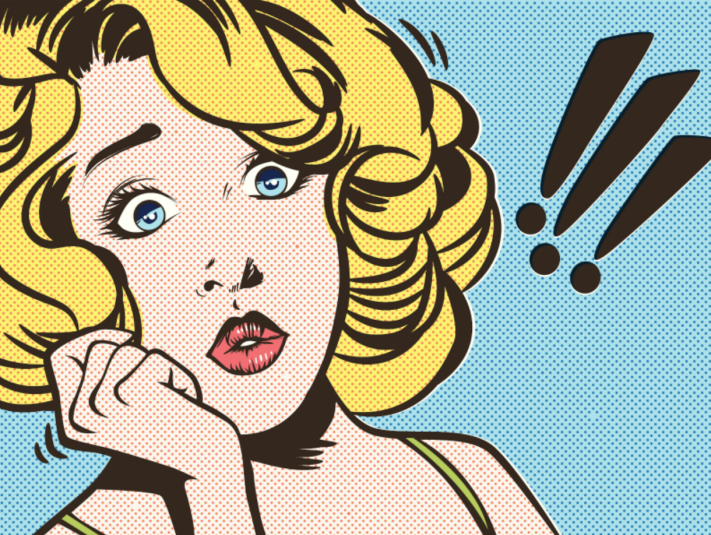My Menopause Treatment Caused Me to Grow a Tiny Penis

As a woman who has witnessed the sun set on her 40s, I’ve experienced it all — memory lapses, voice changes, murderous rages, leaky bladder —and was certain the best days of feeling “normal” were behind me. But when symptoms of insomnia, fatigue, anxiety, depression, low libido, migraines, and hot flashes that could start a forest fire sent me into a mid-life tailspin, I visited a bioidentical hormone replacement specialist who said my hormones were out of whack.
The list was long: hypothyroidism, estrogen dominant, low progesterone, and surprisingly, I had extremely low testosterone. Who knew a middle-aged woman needed testosterone? I was put on a bioidentical hormone cocktail that included testosterone cream. Within a few weeks, I was shocked to discover a miniature penis growing from my girly parts.
My Testosterone-Induced Penis
Okay, it wasn’t really a penis; in reality, it was just that my clitoris was getting bigger, one of the many side effects of taking testosterone (also commonly referred to as “T”) as a woman; male-pattern hair growth is another side effect. My concerns about taking a “male” hormone grew as quickly as my 5 o’clock shadow, but my doctor assured me that a woman’s body naturally produces androgens, and a little T would not only improve my sex drive, but my energy levels, anxiety, migraines, and overall well-being.
As I watched my newly sprouted teeny-weeny develop (I spent way too much time looking at my clitoris in a mirror), I also felt fantastic. The mental fog that had set in lifted. My energy level went through the roof. My sex drive returned from an extended vacation. I could get out of bed — and I wanted to get out of bed. My overall mood and sense of well-being improved; my husband said he had his wife back. I sure as heck wasn’t going to complain about a little “mini-he,” was I?
Ruth Miller, DO, a family practitioner who specializes in bioidentical hormone treatment, says that some women are reluctant to try testosterone therapy because of fears of masculine side effects: acne, oily or thinning hair, increased facial hair.
“Women who are experiencing excessive hair loss or severe acne are getting too much T. The goal is to feel good and avoid any of these side effects, but they can be managed by adjusting the dosages,” Dr. Miller says. “But hormones can be life changing for these women.”
Hormone Replacement Therapy for Menopause
I’m not the only woman whose life has been totally changed with hormone replacement therapy. Hormone replacement therapy was definitely life changing for Kim, who visited an integrative MD when she experienced adrenal exhaustion, and, as she explains, “a firestorm of symptoms.” She began taking a hormone concentration that included testosterone. “I have greater energy, libido, focus, even my skin’s elasticity seems to be holding up better.”
While Kim experienced minimal to moderate Hirsutism, or male-pattern hair growth, it was “nothing that my esthetician & a pair of tweezers couldn’t handle!” It was, she says, “Absolutely worth the trade-off.” And for me, while I didn’t go looking for testosterone to improve my sex-drive, it was one of the many benefits.
“It’s a myth that testosterone is only for low libido,” says Rebecca Glaser, MD, a surgical oncologist in Dayton, Ohio.
“Every single organ system in your body has androgen receptors — the heart, the brain, the bone, the digestive tract, the lungs,” Dr. Glaser says. “It’s not just for libido. That underplays the benefits of testosterone. That’s just the tip of the iceberg.”
Can women take testosterone?
You won’t see any “Low T?” advertisements directed at women, as testosterone is not FDA approved for use in women and its use in women is surrounded by controversy. The Endocrine Society and North American Menopausal Society both oppose testosterone therapy for women, citing insufficient research and too many unanswered questions — including whether or not long-term use could affect a patient’s risk of developing heart disease or breast cancer.
But Glaser disagrees, arguing that research has not proven testosterone’s adverse effects on the heart, and believes it actually has a beneficial effect on breast cancer patients (she has successfully treated breast cancer patients with testosterone for years) — and not just in terms of disease recurrence, but also when it comes to quality of life.
“This is a group of women that are told, ‘You can’t ever have hormone therapy’ but what they really mean is you shouldn’t have estrogen therapy,” she says. “We’ve treated a lot of women with breast cancer with a combination of testosterone and an estrogen blocker, and it’s made life changes in these women.”
Both Miller and Glaser agree that testosterone’s side effects are mainly cosmetic — like my enlarged clitoris — and that any hormone replacement therapy should be based on each individual’s clinical signs and symptoms.
“Some women do experience enlargement of their clitoris,” Glaser says. “Some women like it — some don’t.”
Glaser adds that if your testosterone levels are extremely low, as mine were, you might experience an overreaction initially. But once that evens out, cosmetic overreactions fade.
With some minor adjustments to my medication, my clitoris shrank back to normal. And once my pee-wee went away, my initial concerns of taking testosterone faded. Now in my third year of taking a compounded form of estrogen, progesterone, and testosterone cream, I have no side effects. As for Kim, she no longer experiences facial hair growth, and, after a one-year break, is back on hormone therapy.
“I do NOT plan to let that happen again!” she says.
I know just how she feels.
This essay was written by Elizabeth Mack.
More from FIRST
How a Fight Over a Pan of Fudge Changed My Marriage Forever
5-Year-Old Who’s Already Menstruating Is Now Facing Menopause
I Caught My Husband Cheating, Gambling, and Lying–and This Is How We Made It Out of Those Dark Days













